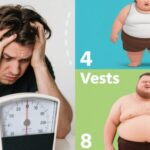Highlights
- Long COVID affects an estimated 16 million U.S. workers, with many unable to return to work due to persistent symptoms and administrative hurdles.
- Workers face challenges in proving occupational acquisition of COVID-19, hampering access to workers’ compensation benefits.
- A lack of standardized diagnostics and FDA-approved treatments complicates insurance coverage and prolongs recovery.
- Older workers and retirees are disproportionately affected, with substantial personal and system-wide economic impacts.
Background and Disease Burden
The aftermath of acute COVID-19 infection has ushered in a new public health crisis: long COVID, or post-acute sequelae of SARS-CoV-2 infection (PASC). Characterized by persistent fatigue, cognitive dysfunction, dyspnea, and a host of other symptoms lasting weeks to months, long COVID has emerged as a major driver of disability in the working-age population. According to recent estimates, approximately 16 million U.S. workers have experienced long COVID, leading to widespread absenteeism, loss of productivity, and financial insecurity. The disease disproportionately affects those in high-exposure occupations, such as healthcare, hospitality, and transportation. For many, the journey back to work is hindered not only by their ongoing symptoms but also by a complex landscape of medical, legal, and insurance barriers.
Study Design and Data Sources
Recent analyses have leveraged large administrative datasets, including workers’ compensation claims and Medicare records, to quantify the scope and impact of long COVID. Notably, a study published in The Journals of Gerontology (Abul Y et al., 2025) examined the incidence and duration of long COVID among 3.6 million Medicare beneficiaries. State-level insurance fund analyses, such as those from California and New York, provide additional granularity on occupational patterns and economic consequences. These studies are predominantly retrospective, utilizing diagnostic codes, claims data, and self-reported symptoms to identify cases and outcomes.
Key Findings
Occupational Acquisition and Claims Challenges
A critical challenge for affected workers is establishing that their COVID-19 infection—and subsequent long COVID—was acquired in the workplace. Without clear documentation or exposure tracing, many are unable to access workers’ compensation benefits, which are designed to cover medical expenses and lost wages for job-related injuries and illnesses. This is especially problematic for those in public-facing jobs (e.g., restaurant workers, flight attendants) where proof of occupational exposure is inherently difficult.
Economic Burden
The financial impact is profound. In California, long COVID-related claims comprised 5% of all workers’ compensation cases but were responsible for 82% of medical expenditures, totaling upwards of $350.6 million to date. New York State data revealed that out of over 3,100 long COVID claims, 18% of affected workers were unable to return to work for more than a year. Nationally, long COVID accounts for approximately 6% of all workers’ compensation claims, yet many claimants face protracted disputes and denials.
Barriers to Diagnosis and Treatment
Diagnosis of long COVID remains a process of exclusion, requiring extensive testing to rule out alternative explanations for symptoms. The absence of a definitive biomarker or standardized diagnostic criteria complicates both clinical care and insurance adjudication. Insurers, including workers’ compensation carriers, are reluctant to approve costly and often inconclusive diagnostic evaluations. Furthermore, there are currently no FDA-approved treatments specifically for long COVID. While some clinicians report off-label benefits from medications such as low-dose naltrexone, these therapies are rarely covered, forcing patients to pay out-of-pocket or forgo care altogether.
Older Adults and Early Retirement
Medicare data underscore the heavy toll on older populations. Abul Y et al. (2025) found that nearly 4% of 3.6 million Medicare recipients were diagnosed with long COVID, with symptoms persisting beyond one year in many cases. This cohort likely includes a significant number of workers who opted for early retirement due to disability, further straining social safety nets and reducing workforce participation.
Expert Commentary
Dr. Grace McComsey, a leader in long COVID research, emphasizes the escalating costs and the urgent need for clinical research: “Understanding how costly this disease is, we should be all-in when it comes to researching effective treatments.” Dr. Nisha Viswanathan highlights the practical dilemma for clinicians: “While I’m glad that these patients are getting recognition that their long COVID was a result of their jobs, I still see a lot of struggles.” Both advocate for regulatory reforms, standardized testing, and the development of evidence-based therapies to facilitate insurance coverage and patient recovery.
David Putrino, PhD, notes the profound impact on older adults, many of whom are left with little option but to retire: “The Medicare numbers are eye-catching.” The lack of specialist access, even when coverage is technically available, exacerbates the burden on this vulnerable group.
Conclusion
Long COVID has swiftly become a leading cause of work-related disability in the United States. The absence of standardized diagnostic tools and FDA-approved treatments hampers both effective care and equitable insurance coverage. Affected workers face a daunting path, often compounded by administrative delays and financial hardship. There is an urgent need for interdisciplinary research, regulatory clarity, and policy innovation to support recovery and workforce reintegration. Until then, millions remain caught in a cycle of illness, bureaucracy, and uncertainty.
References
Abul Y, Harris DA, Chachlani P, Hayes KN, Zullo AR, Mor V, Gravenstein S. Incidence of Long COVID Diagnoses in 3.6 Million U.S. Medicare Beneficiaries With COVID-19. J Gerontol A Biol Sci Med Sci. 2025 Jun 10;80(7):glaf108. doi: 10.1093/gerona/glaf108. PMID: 40371440; PMCID: PMC12202091.
Additional references available upon request for clinicians seeking detailed epidemiology or policy analyses.



